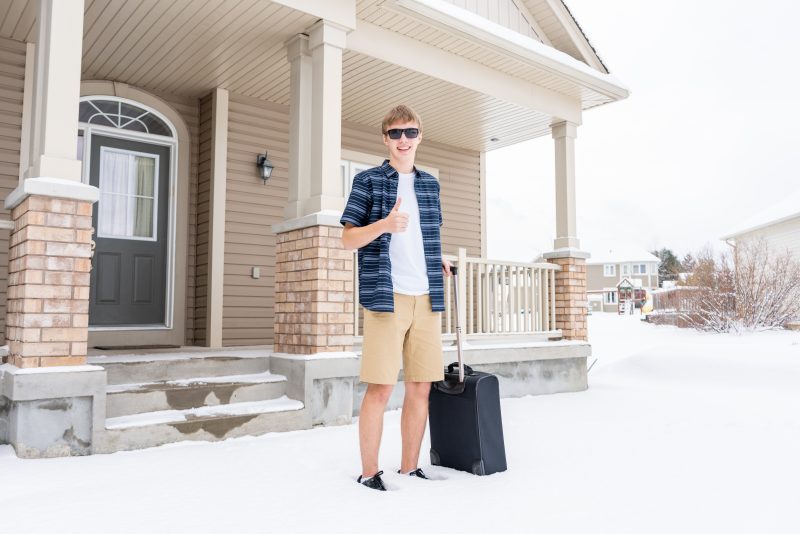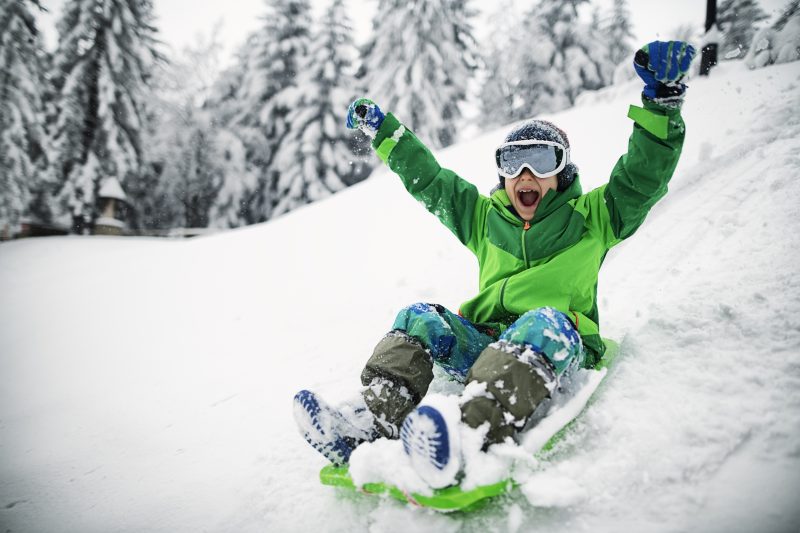
Wearing shorts in winter has become a popular trend among boys. It’s also a fashion statement many parents hope goes away.
As the season changes from fall to winter, logic dictates adjusting your wardrobe to account for falling temperatures. Swapping out bathing suits and shorts for long pants and sweaters is an obvious choice—that is, unless you are a school-age or teen boy. In that case, wearing shorts year-round is not only trendy, it’s common. For parents, the struggle to get their kids to dress for the weather is real. What will the neighbors or their teachers think about your parenting if you let them go out in shorts and a hoodie in 20 degrees?
According to Dr. Jason Levine, pediatrician at Akron Children’s Pediatrics, the battle to get boys to dress appropriately in winter is a universal problem faced by parents, but the bigger question is why?
“Hormones like testosterone could definitely play a role, but culturally boys are taught societal norms that push them to be ‘manly’,” he said. “To them, being cold may be associated with being wimpy. In addition, adolescents uniquely strive to be autonomous, and tend not to like being told what to do.”
For some kids, wearing shorts is just something they find more comfortable. So, is it safe to let them?

Not dressing appropriately for cold temperatures puts kids and teens at risk for frostbite and hypothermia.
“The safety of wearing shorts in the winter really depends on what the temperature and wind-chill is outside,” said Dr. Levine. “When it starts to fall below 40 degrees, and worse, below freezing temperatures, anyone will be at risk for developing things like frostbite or hypothermia. Younger children are at greater risk because they have less adaptive behavioral reactions, meaning they do not react as fast to cold temperatures.”
Common sense should influence when parents need to step in with a tough-love approach. What they wear running from the house to a waiting car is different than what they should wear sledding.
“Children of all ages should wear pants when the weather is under 40 degrees,” he said. “If the temperature or wind chill dips to 32 degrees or below, they should not only wear pants, but also a coat, gloves, scarf and hat. With activities like skiing or any extreme winter sport, they should add goggles and a helmet.”

If your son insists on dressing in shorts when the temperature dips below 40 degrees, wearing tights under his shorts could be a good compromise.
While it’s easy to chalk up wearing shorts in winter to boys being boys, it’s important for parents to stress the very real complications of frostbite and hypothermia, which can occur when skin is exposed to cold temperatures for an extended period of time.
“Frostbite is when skin and other tissues in the body literally become frozen. Although this can happen anywhere on the body, the particularly susceptible areas are the nose, ears, fingers and toes,” said Dr. Levine. “When frostbitten, they can become pale, gray and blistered, and in late stages, become numb. If they are numb for more than a few minutes you should seek medical care. Until then, the area in question should be warmed with warm (not hot) water, and your child should be wrapped in a blanket.”
Hypothermia is a state in which the body loses heat faster than it can produce. This commonly happens with extended exposure to cold temperatures.
“Signs that your child is hypothermic include shivering, lethargy and clumsiness,” said Dr. Levine. “In severe cases speech can become slurred. This is an indication to seek emergency treatment.”

Kids should protect their skin from the elements when outside for prolonged periods of time, for instance, when sledding, skiing or hiking. This includes wearing a coat, hat, gloves, pants, boots and goggles when appropriate.
With all this in mind, Dr. Levine says it’s important for families to establish firm routines that set clear boundaries and expectations for behaviors.
“Kids thrive with routine, structure and consistency,” he said. “In this case, clearly state, ‘If you’re going to play in the snow, you need to (fill in the blank)’. Routines are especially effective when all caretakers (parents, grandparents, babysitters) are on the same page.”
As with many phases of childhood and adolescence, parents can hope the “shorts in winter” phase is one their boys will eventually grow out of. In the meantime, take comfort in knowing you are not alone.










